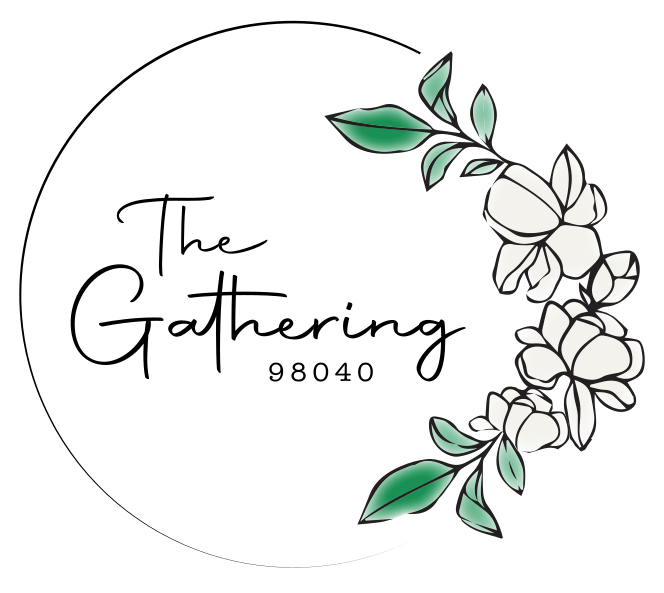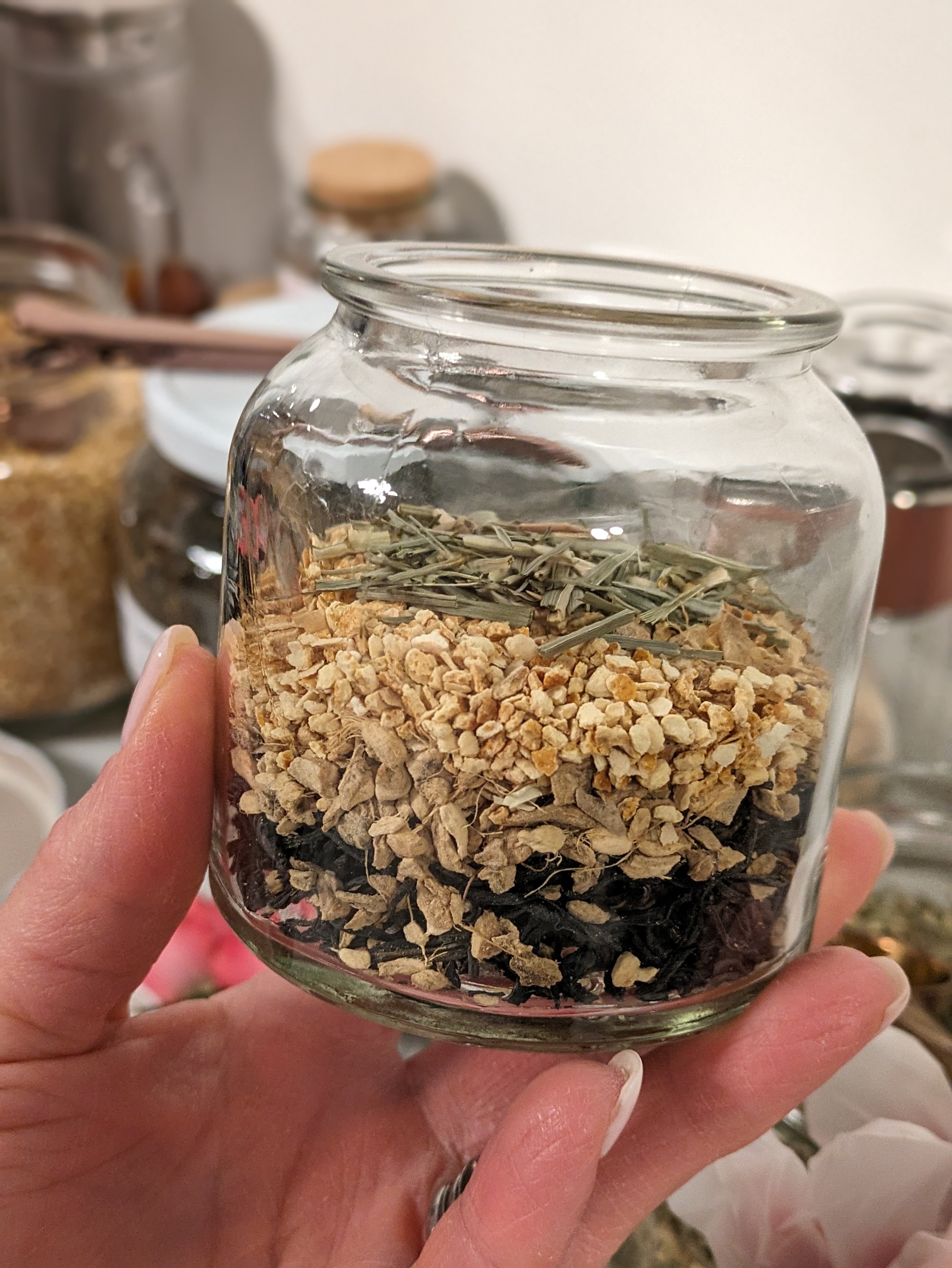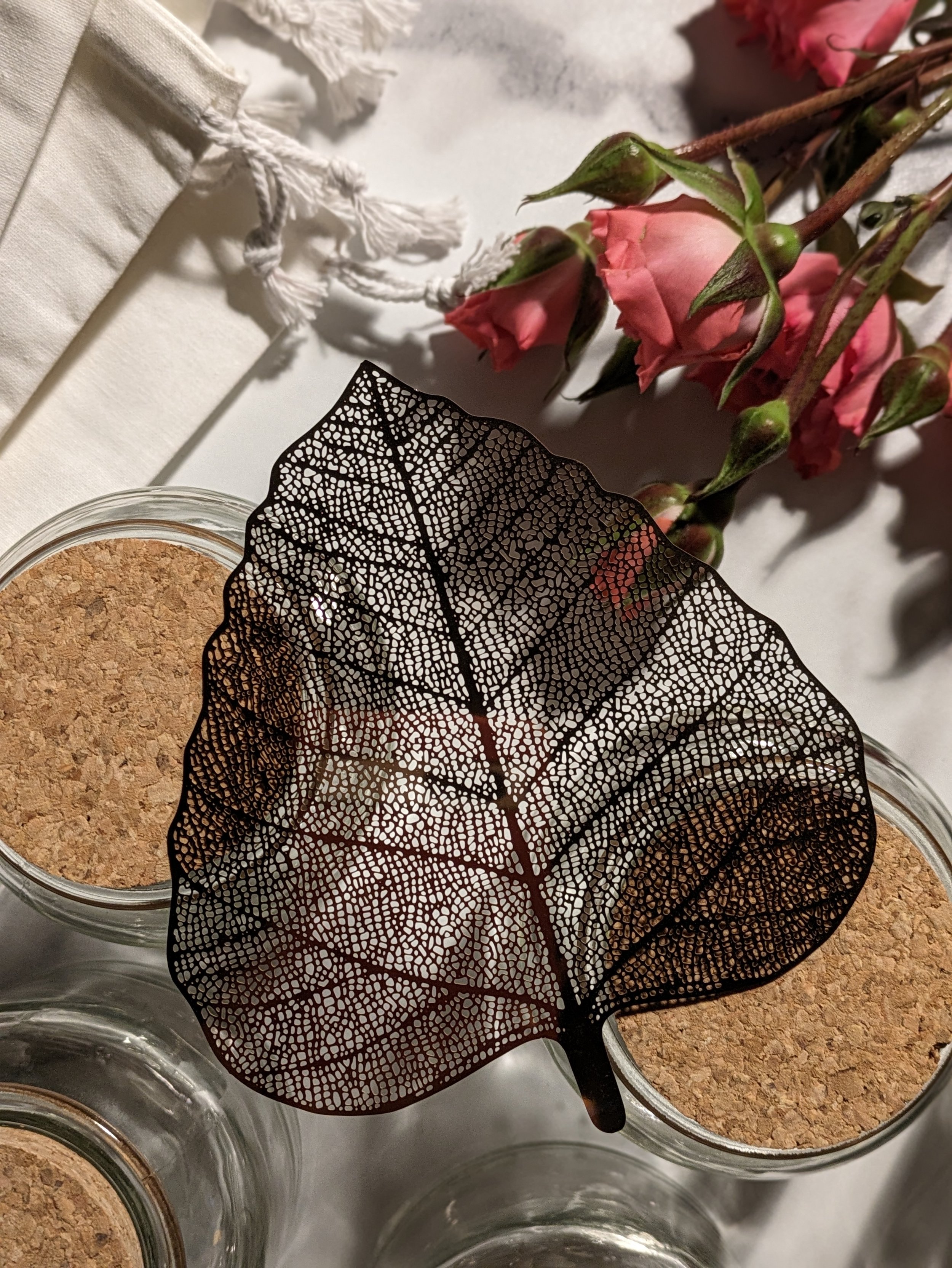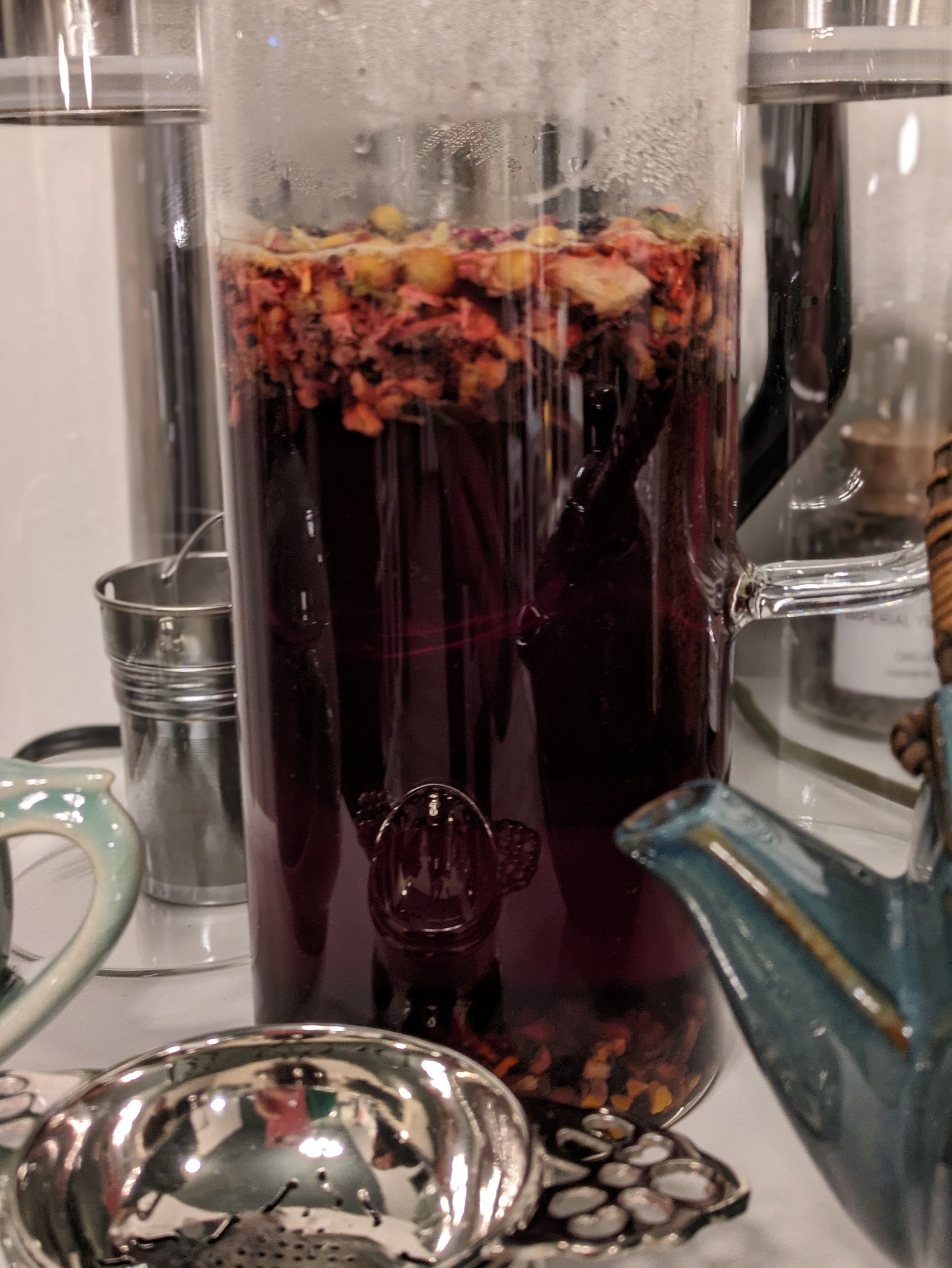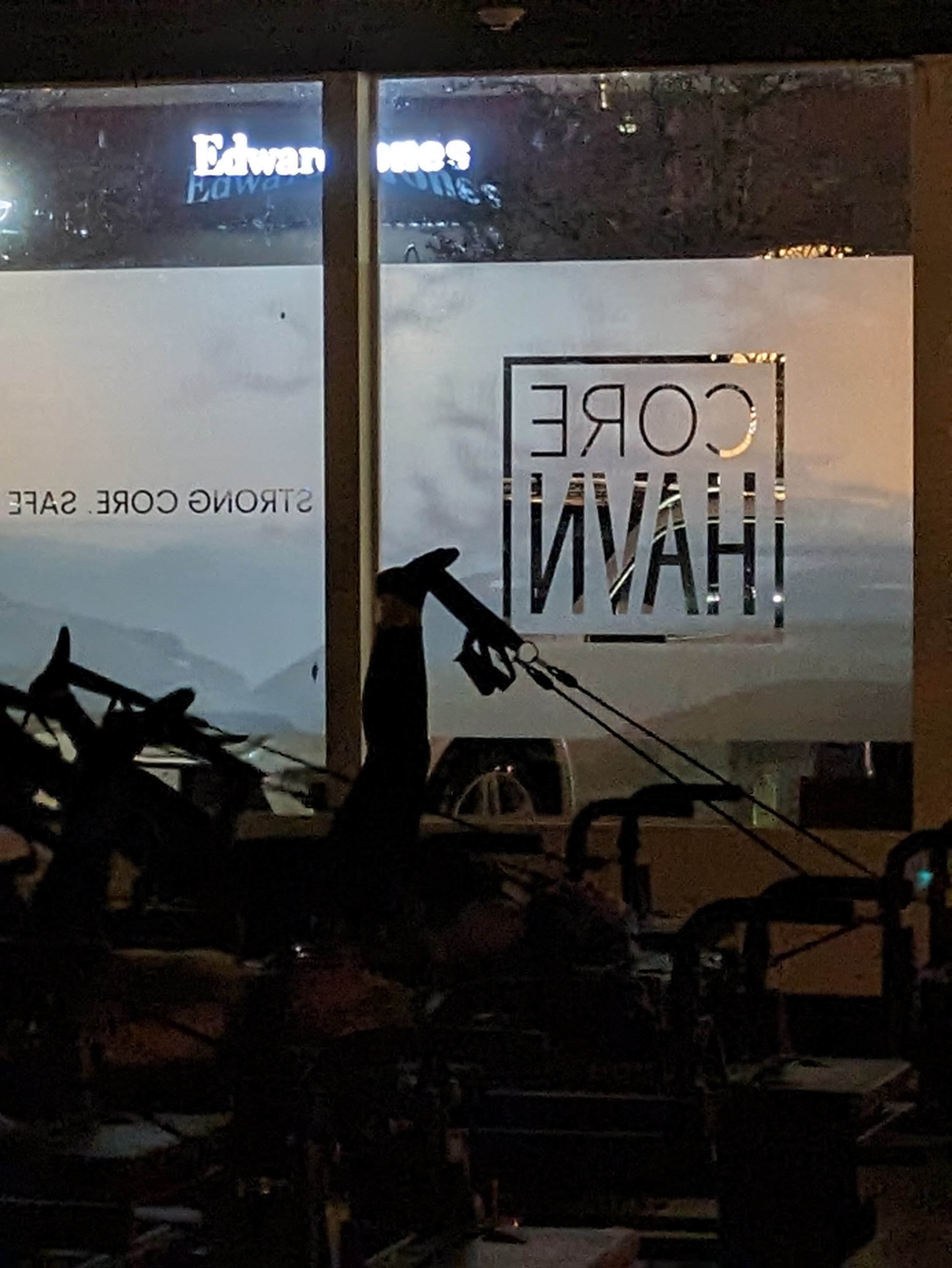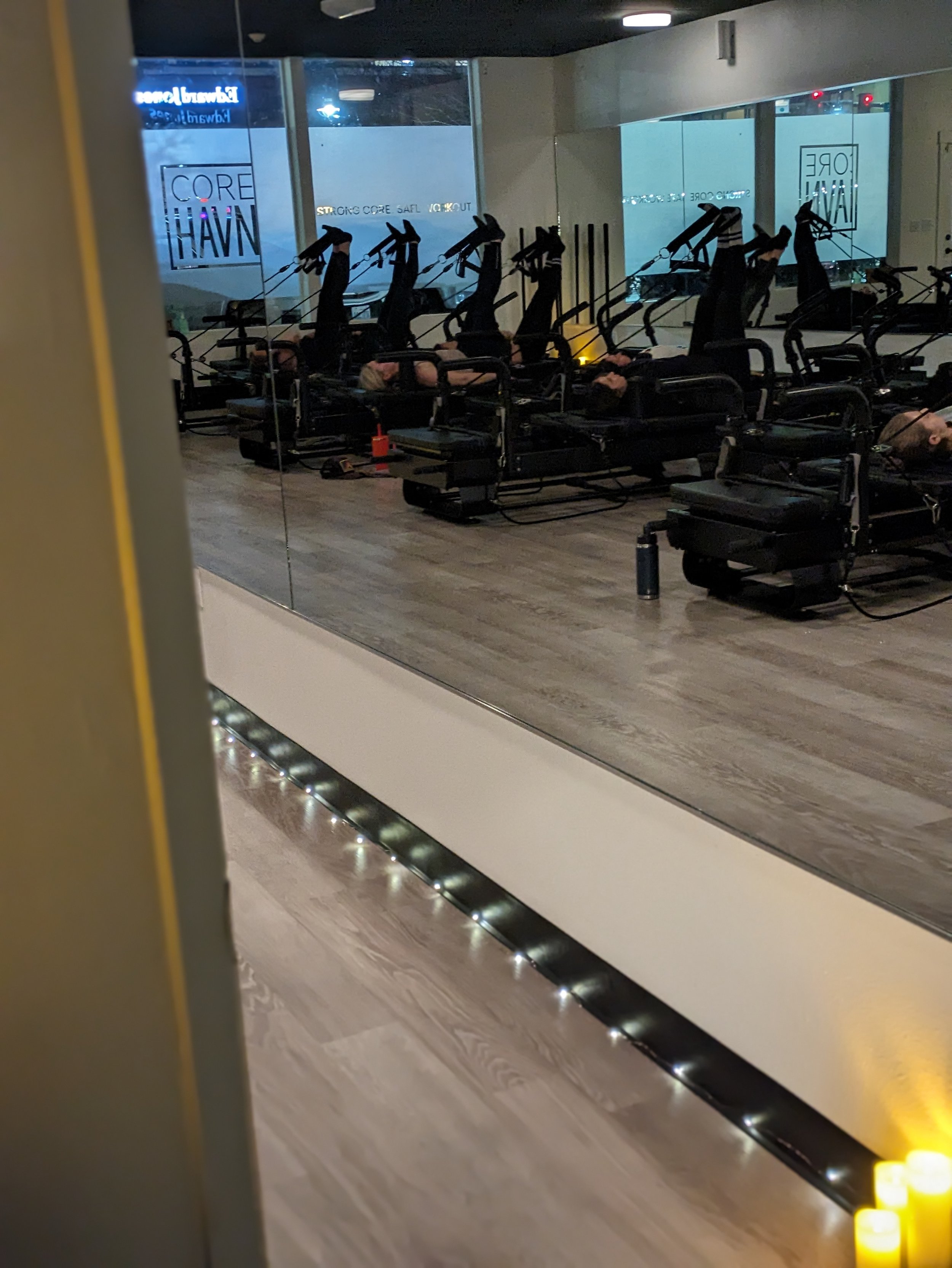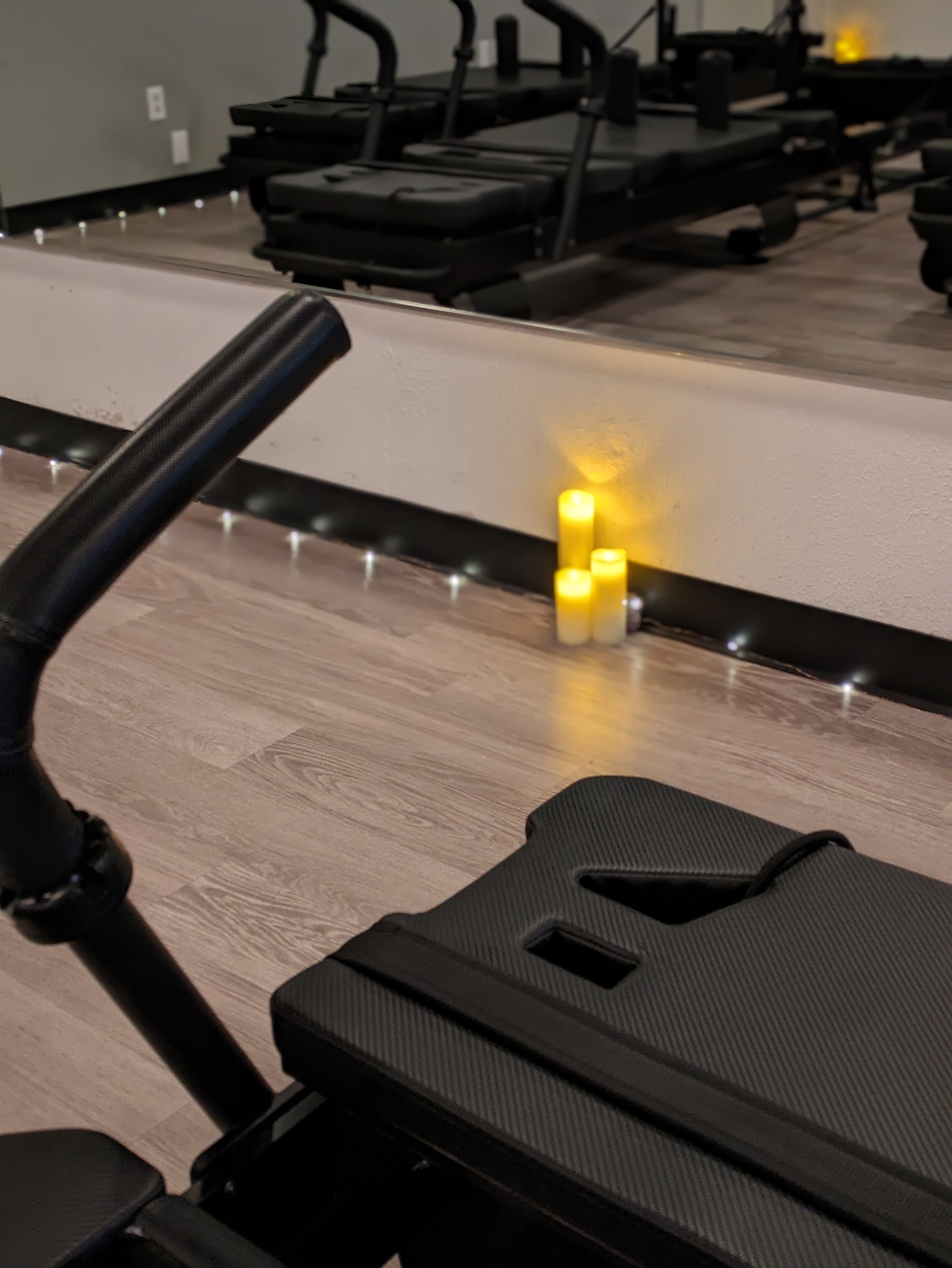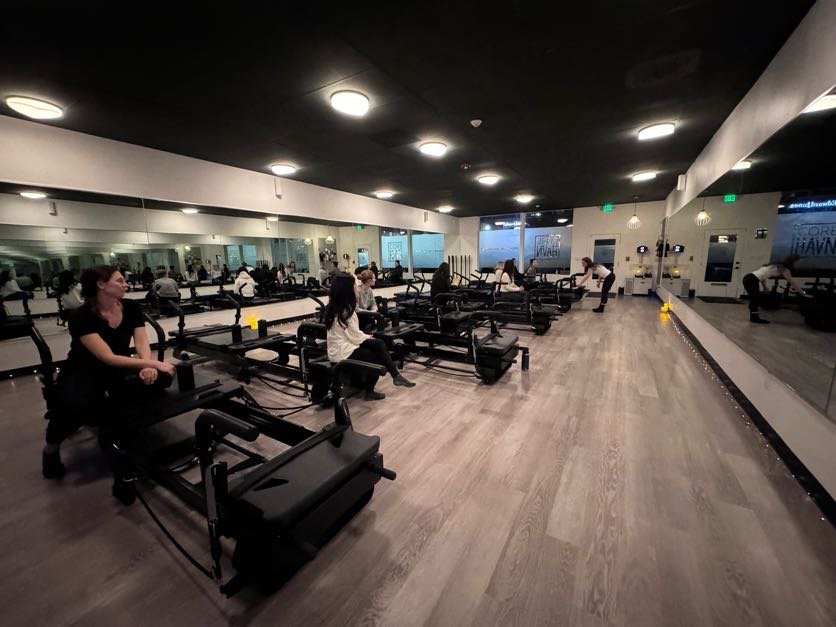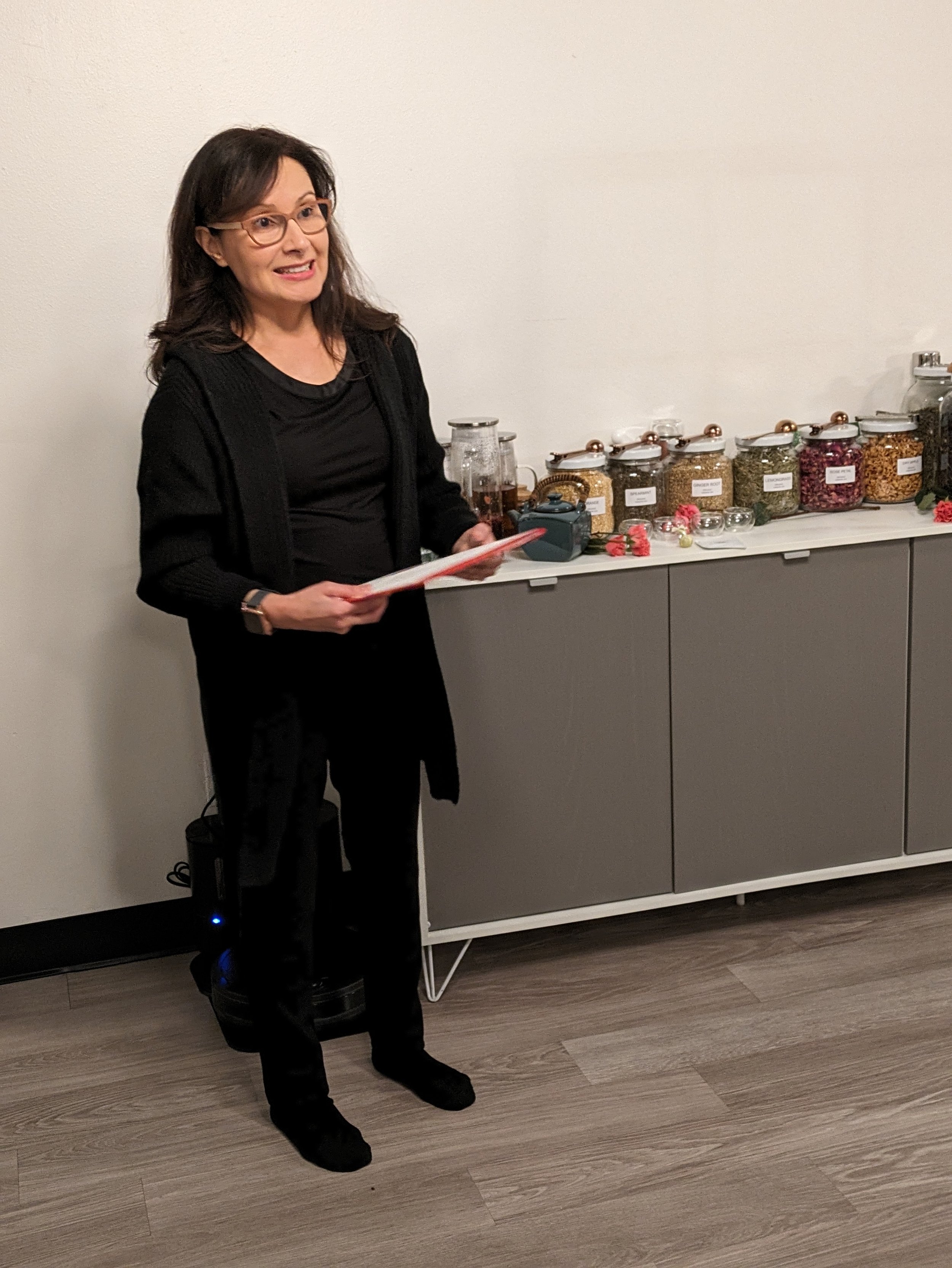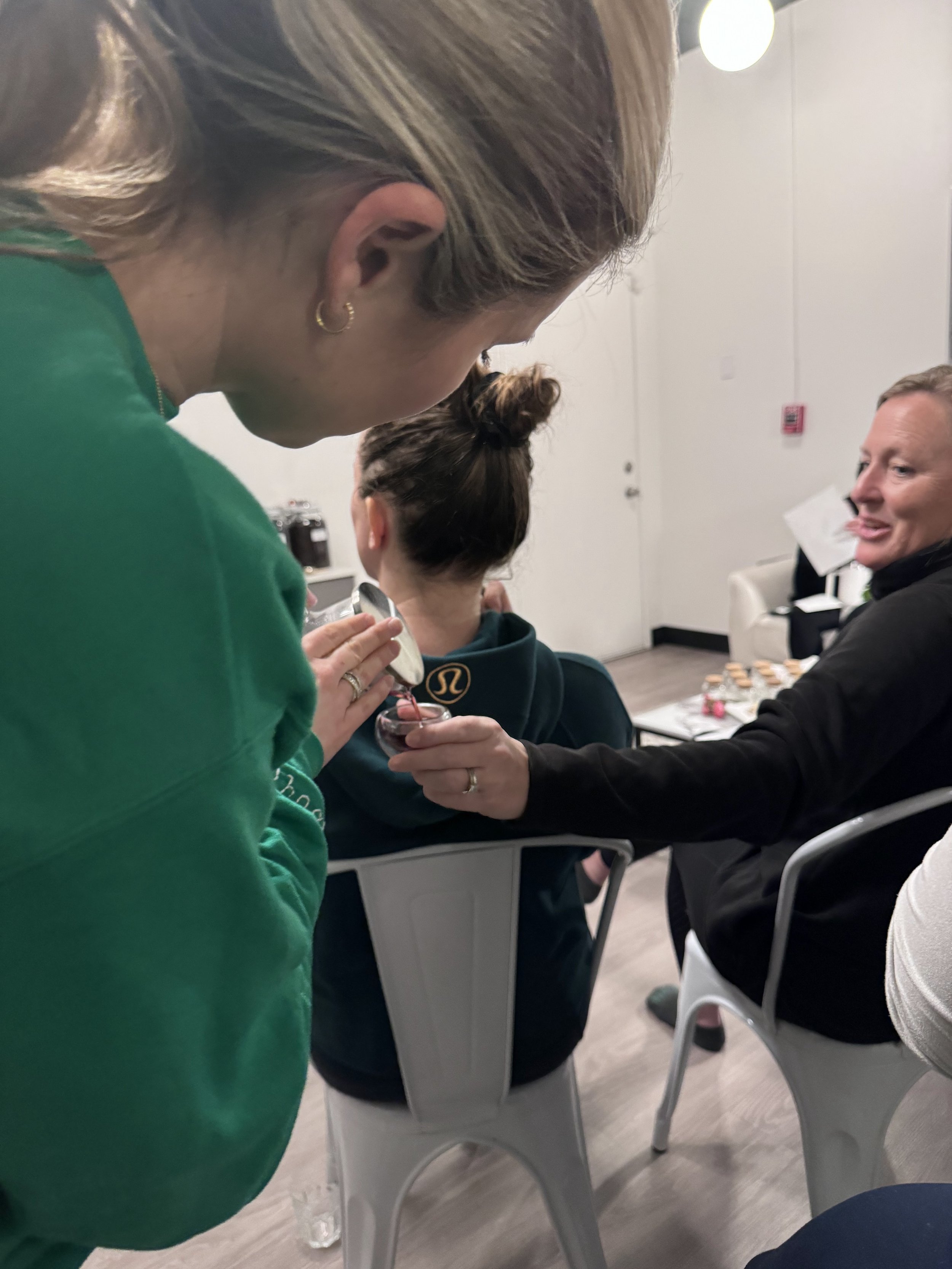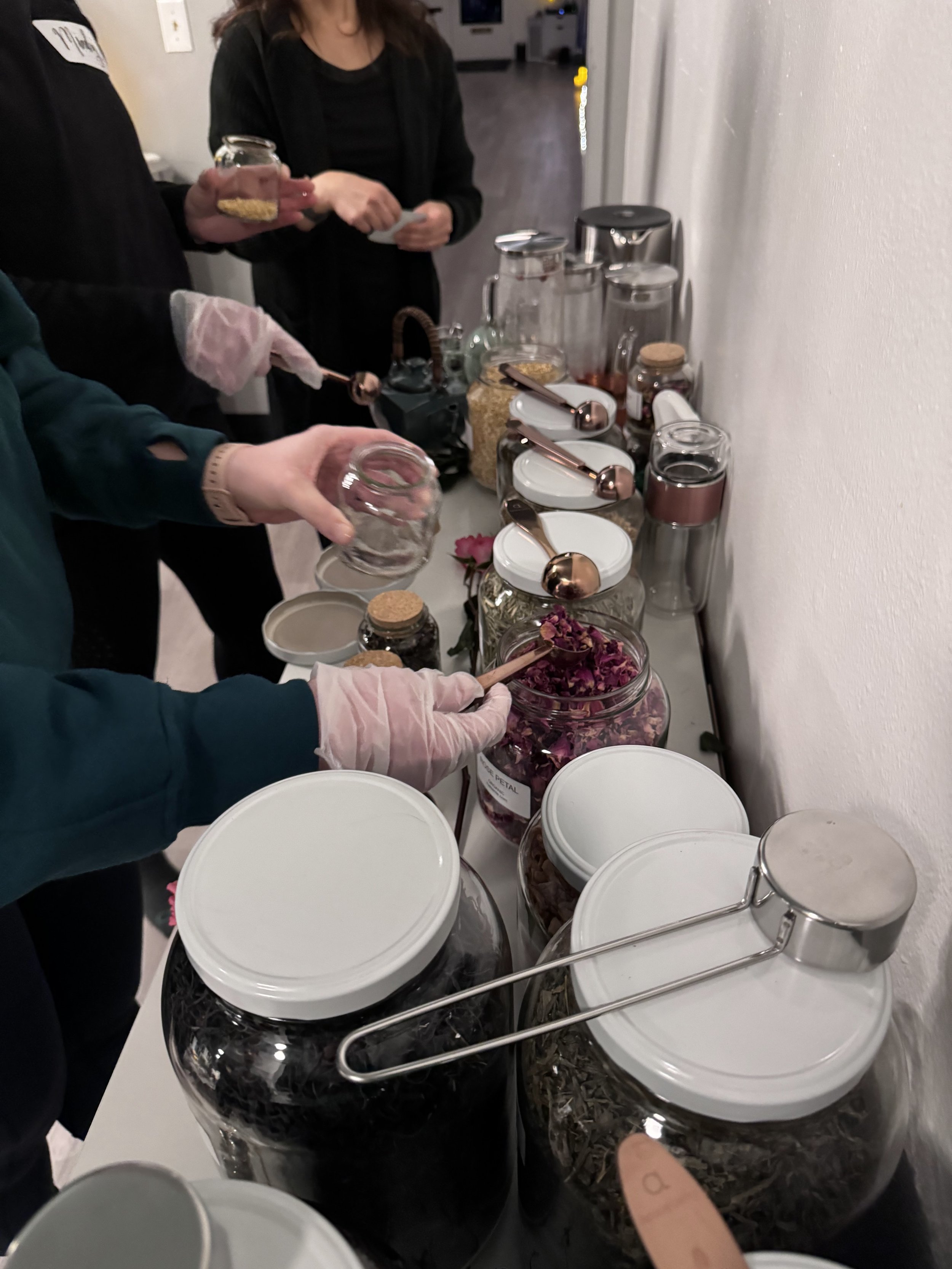Stretch and Sip: Core Havn candlelight stretch + tea blending
We shared a restorative evening with Core Havn and Rue Sante this January indulging in a guided reformer stretch followed by tea tasting education and custom botanical blending.
We began our evening of slowing down and focusing inward with an intensive stretch session led by Core Havn studio founder and owner, Cat DeHaven. Cat set the tone for the evening with dimmed lights, a few strands of fairy lights and candles placed throughout the studio. Cat began the session with a warm up that included a series of stretches on and off of the reformers. Stretches included side lunges, cat-cow, playful puppy, child's pose and more.
Cat guided attendees through this series of gentle stretches while also encouraging them to focus on their breathing with slow inhales and exhales to match the extended stretch holds. Following the opening stretches, it was time to move into the more active work for the evening which included everything from seated crunches with slow and controlled movements, to bridge poses, plies, leg lifts, standing stretches, lunges, leg lifts and more. Following 45 minutes of challenging, yet restorative stretches, guests moved into the back room to begin the tea blending portion of the evening.
We were thrilled to welcome local tea expert and business owner, Elizabeth Lopez of Rue Sante. Elizabeth is the founder of Rue Sante, a wellness company that focuses on both inner and outer body mindfulness by providing tools for self care.
Elizabeth condensed what she normally teaches in a 4 week tea workshop into a quick one hour intensive tea talk. We began by covering the history of tea, it’s cultivation and origins. Then we moved on to learning tea basics. Did you know that all types of tea, be it green or black come from one type of tea plant? All tea comes from the Camellia Sinensis Assamica plant and the varieties are simply due to different growing and processing techniques. The six varieties of tea include white, black, yellow, oolong, hojicha, and green.
Botanicals such as rose petals, lemon grass, orange, ginger root, and peppermint are not tea, but plants that are used for mixing, and blending. In addition to botanicals you can also blend with adaptogens such as lions main, licorice root, and more, which can help your body with stress regulation and inflammation. Guests were able to taste three custom tea blends while they learned about the fascinating varieties and steeping techniques for tea, botanicals and adaptogens.
Did you know purple tea is high in antioxidants and micronutrients? The tea leaves are purple due to a unique genetic mutation which produces anthocyanin. This is the same powerful antioxidant found in blueberries (in fact, it contains much higher levels of anthocyanin compared to blueberries).
It was Elizabeth’s hope that each of our guests went home with an appreciation for the ritual of drinking tea. She encouraged attendees to take more moments to calm themselves, slow down and be more intentional. Try to take a moment to enjoy the beauty of the tea, the process, and the smell the next time you steep at home. Elizabeth sets a daily alarm each afternoon as a reminder to take a break from her work and take a moment for herself through her afternoon tea ritual.
Each guest went home with a custom blend of tea. Guests could choose from green tea, hojicha, black tea, and more. Some of the most popular botanical blends included rose petals, and orange.
Elizabeth’s Tea Tips:
All tea has caffeine in varying levels.
Is there an ideal steeping temperature? Elizabeth prefers a lower temperature and a longer steep (ex. 175-185 degrees). Try not to use boiling water. You can even steep your tea in the fridge for 24 hours.
Botanicals (such as rose petals) are delicate and cannot stand up to higher steeping temperatures. Roots are not delicate and can steep longer.
It's okay and encouraged to double or even triple steep your tea!
Botanicals such as rose petals, lemon grass, orange, ginger root, and peppermint are not tea, but plants that are used for mixing, and blending.
Buy loose leaf, high quality tea (tea bags often contain micro-plastics). Yuck!
General rule of thumb - 1 tsp of loose tea per 8oz cup (or 7g) adjust accordingly.
Lavender Shortbread
Ingredients: 1/2 cup rice flour, 1 1/2 tsp. kosher salt, 2 1/2 cups all-purpose flour, plus more, 1 cup plus 6 Tbsp. unsalted butter, cut into pieces, room temperature, 3/4 cup granulated sugar, 2 tsp. coarsely ground dried lavender
Directions: Whisk rice flour, salt, and 2 1/2 cups all-purpose flour in a medium bowl. Using an electric mixer on medium-high, beat butter, sugar, and lavender in a medium bowl until very pale and fluffy, about 5 minutes. Mix in dry ingredients on low until fully combined. Wrap in plastic and chill at least 2 hours and up to 2 days.
Preheat oven to 350'. Roll out dough between 2 sheets of lightly-floured parchment to 1/8" thick. Cut using your preferred cookie or biscuit cutter. Re-roll the scraps and repeat. Bake on parchment-lined baking sheets until edges are golden, 12-14 minutes. Let cool on a wire rack.
Recipe adapted from Bon Appetit.
Our top picks for tea blending at home
Now that you know the difference between the six tea varieties and botanicals it’s time to continue your blending journey at home. Below you will find all of Elizabeth’s top picks. Relax and enjoy!
For any slow pouring technique, whether for tea or pour-over coffee, a gooseneck kettle is a must:
Top of the line: Fellow Stagg Electric Kettle
Economy option: Bodum Melior
Tea pots that are cute, compact, and affordable:
ForLife Dew Teapot: ForLife has modern styles and colors ForLife Teapot
Toptier Japanese Cast Iron Teapot: versatile heating methods, indestructible, retains heat. Multiple styles and colors available Toptier Teapot
Two local woman-owned ceramicists Elizabeth loves:
The Waight: Courtney makes everything by hand, she does not use a pottery wheel. She has stackable cups that are beautiful and super efficient for storage The Waight
S.T. Cao Ceramics: Steph hand makes everything - both wheel thrown and some hand builds S.T. Cao Ceramics
Botanical Beverage Infuser: this doubles as a drinking vessel. This can be used for hot or cold beverages, including fruit infusions. Botanical Beverage Infuser
Until we gather again!
**As Amazon Associates we earn from qualifying purchases.
